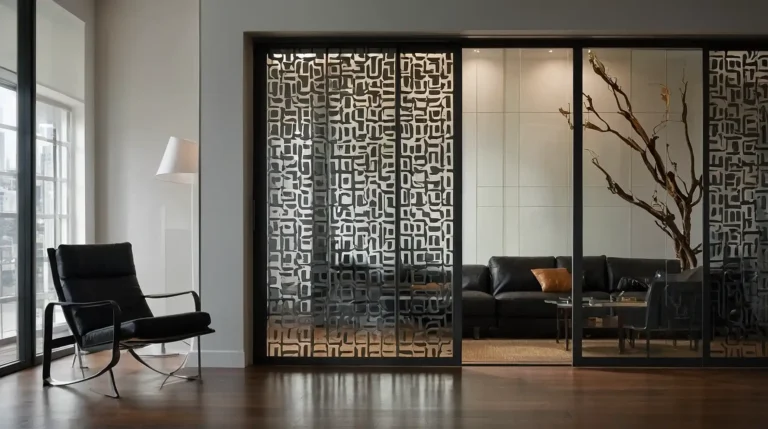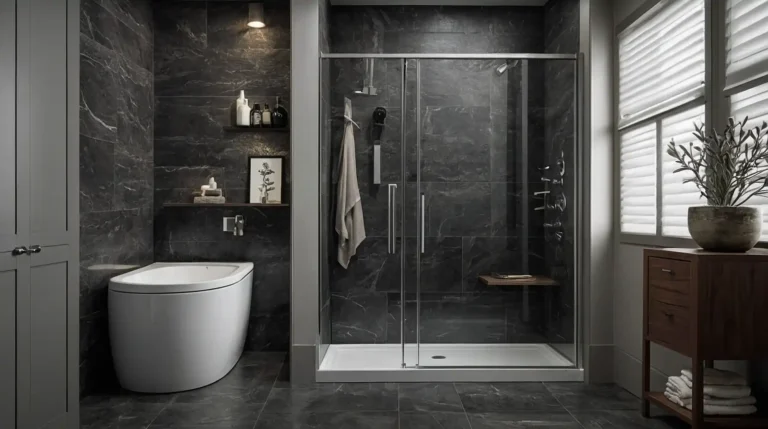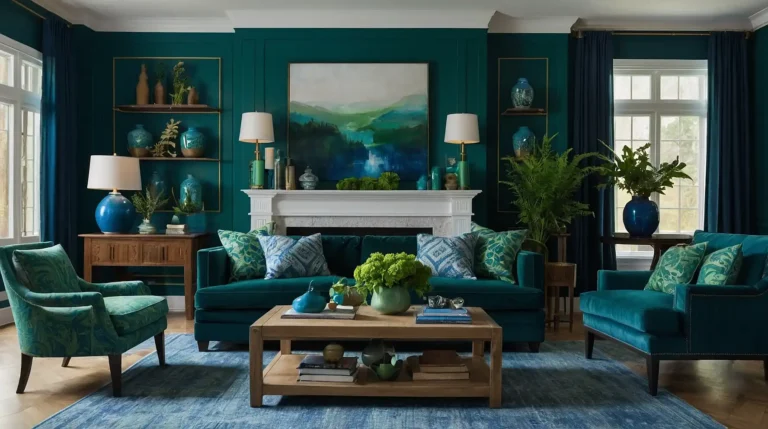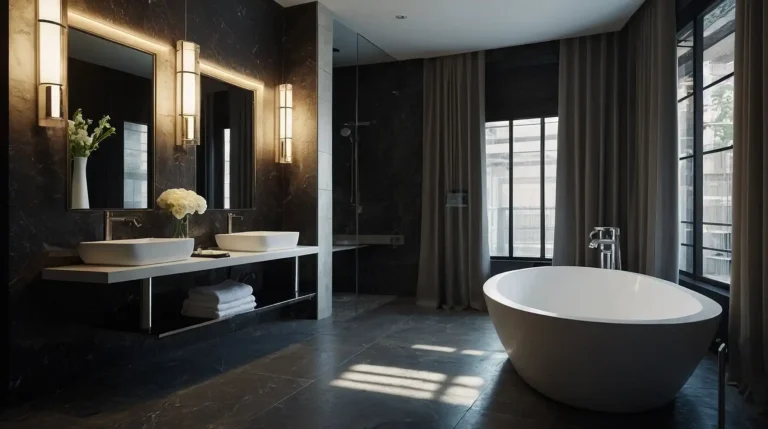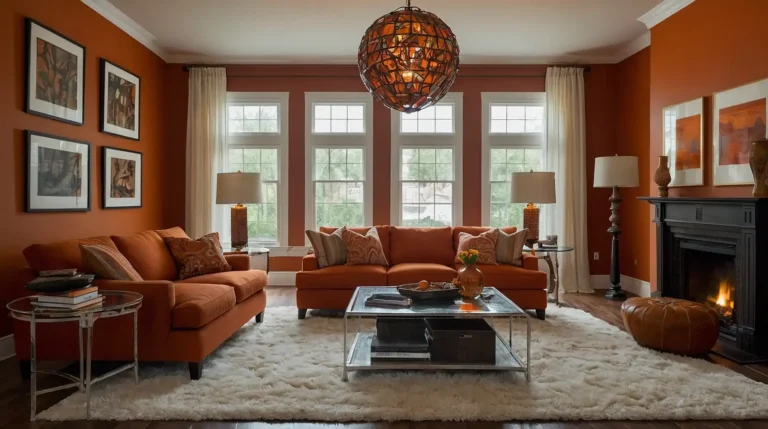27 Eye-Catching Front Flower Bed Ideas to Boost Your Home’s Curb Appeal
Your front yard creates the first impression of your home, and a well-designed flower bed instantly elevates your curb appeal.
Front flower beds frame your home’s architecture while showcasing your personal style through color, texture, and seasonal interest.
With the right design approach, you can transform your front yard into a stunning landscape that welcomes visitors and brings you joy every time you arrive home.
1: Layered Border Garden

Create depth by planting taller perennials at the back of your bed, medium-height flowers in the middle, and low-growing plants along the edge.
This classic approach ensures every plant receives adequate sunlight while creating a visually appealing gradient effect.
Add spring bulbs throughout to provide early season color before your perennials reach their prime.
2: Curved Edging Design

Install curved brick, stone, or concrete edging to separate your flower bed from the lawn with elegant, flowing lines.
These graceful curves add sophisticated visual interest even during seasons when flowers aren’t at their peak.
Choose edging materials that complement your home’s architecture for a cohesive look that appears professionally designed.
3: Symmetrical Foundation Plantings

Flank your front door with identical flower beds featuring matching evergreens, hydrangeas, or ornamental grasses.
This formal approach creates balance and directs attention to your entryway while providing year-round structure.
Add seasonal flowers in complementary colors to brighten the symmetrical framework throughout the growing season.
4: Drought-Tolerant Xeriscape

Combine water-wise succulents, ornamental grasses, and native wildflowers for a low-maintenance, eco-friendly front yard display.
These resilient plants thrive with minimal irrigation while providing distinctive textures and forms throughout the year.
Incorporate decorative stone or gravel pathways to enhance the xeriscape aesthetic while improving drainage around your home.
5: Cottage Garden Style Bed

Pack your front flower bed with an abundant mix of old-fashioned perennials like coneflowers, black-eyed Susans, and garden phlox.
This romantic, seemingly random approach creates a relaxed, colorful display that improves with each passing year.
Allow plants to self-seed and gently spread for that authentic cottage garden charm that never goes out of style.
6: Monochromatic Color Scheme

Select flowers in varying shades of a single color family—purples, whites, or yellows—for a sophisticated, designer look.
This restrained palette creates instant harmony while still offering visual interest through different plant heights and bloom times.
Choose plants with interesting foliage textures to enhance the monochromatic theme even when flowers aren’t in bloom.
7: Raised Bed with Stacked Stone

Elevate your front flower display with a raised bed constructed from natural stacked stone or manufactured wall blocks.
This architectural approach adds dimension to flat yards while improving drainage and creating a distinct visual boundary.
Fill with rich soil amended specifically for the types of flowers you plan to grow for optimal plant health and performance.
8: Pollinator-Friendly Haven

Fill your front flower bed with nectar-rich blooms like coneflowers, bee balm, and butterfly weed to attract beneficial insects.
This eco-conscious approach supports local wildlife while providing constant activity and movement in your front yard display.
Group plants in clusters of at least three to create irresistible landing zones for butterflies, bees, and hummingbirds.
9: Evergreen Structural Framework

Anchor your flower bed with compact evergreen shrubs like boxwood, holly, or dwarf conifers for year-round structure.
These architectural plants maintain your landscape’s form during winter months when perennials have died back.
Plant colorful annuals and perennials between the evergreens for seasonal bursts of color against the consistent green backdrop.
10: Tropical-Inspired Oasis

Incorporate bold-leaved plants like cannas, elephant ears, and ornamental bananas for a vacation-inspired front yard escape.
These dramatic specimens create instant impact with their oversized foliage and exotic flowers, even in non-tropical climates.
Treat tender tropical plants as annuals in cold regions or grow them in containers that you can bring indoors during winter.
11: Vertical Element Focal Points

Install decorative trellises against your home’s foundation to support flowering vines like clematis, morning glory, or jasmine.
These vertical accents draw the eye upward, connecting your flower bed visually to your home’s architecture.
Position trellises between windows where climbing plants won’t block light or interfere with your home’s structural elements.
12: Geometric Modern Design

Create contemporary appeal with clean-lined flower beds featuring bold, geometric shapes rather than traditional curves.
This architectural approach works particularly well with modern home styles and creates striking patterns visible from the street.
Plant en masse with simple, repeated plant varieties for a clean aesthetic that makes a strong visual statement.
13: Seasonal Bulb Succession

Plant layers of spring-flowering bulbs at different depths to create months of successive blooming from February through May.
Begin with snowdrops and crocus, followed by daffodils and tulips, ending with alliums for a constantly evolving display.
Intersperse with summer-blooming perennials that will fill in as bulb foliage dies back, maintaining continuous garden interest.
14: Native Plant Showcase

Fill your front beds with plants indigenous to your region, creating an authentic landscape that thrives with minimal intervention.
These well-adapted species require less water, fertilizer, and pest control once established in their natural growing conditions.
Research local native plant societies for region-specific recommendations that will flourish in your particular soil and climate.
15: Fragrant Entryway Garden
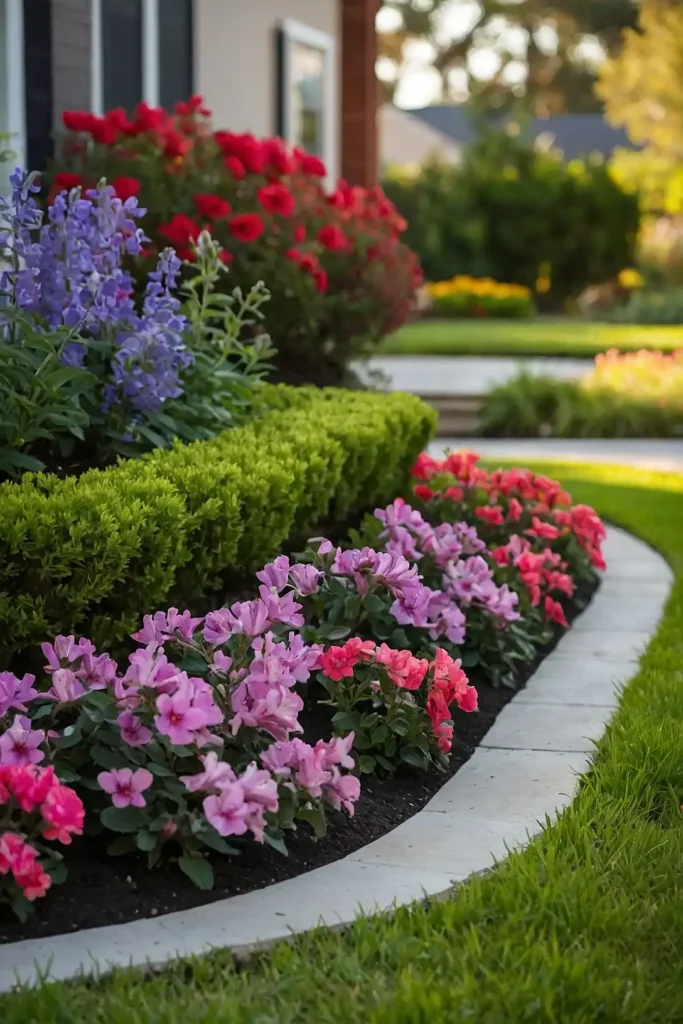
Plant aromatic flowers and herbs like lavender, roses, and catmint near your front door to create a sensory welcome experience.
These fragrant varieties add an extra dimension to your landscape, engaging visitors’ sense of smell as they approach your home.
Position scented plants where they’ll receive adequate air circulation, which helps release their fragrance and prevents fungal issues.
16: Four-Season Interest Design

Select plants specifically for their shifting seasonal attributes—spring flowers, summer textures, fall colors, and winter structure.
This thoughtful approach ensures your front flower bed offers something beautiful to admire throughout the entire year.
Include evergreens, plants with decorative seedheads, and varieties with colorful winter stems for cold-season interest.
17: Tiered Retaining Wall Gardens

Transform a sloped front yard into dramatic tiered flower beds using retaining walls of stone, timber, or concrete blocks.
This engineering solution prevents erosion while creating multiple level planting areas with excellent drainage.
Plant cascading varieties at the edges of each tier to soften the hardscape elements and create visual flow between levels.
18: Ornamental Grass Accents

Incorporate architectural grasses like feather reed grass, fountain grass, or blue fescue for movement and texture.
These low-maintenance plants provide multi-season interest with their distinctive forms, seedheads, and winter presence.
Position grasses where backlighting from the morning or evening sun will highlight their translucent qualities for dramatic effect.
19: Mailbox Garden Surround

Create a charming flower bed around your mailbox to bring color and curb appeal to the boundary of your property.
Choose low-growing, compact varieties that won’t obstruct mail delivery or create visibility issues for passing traffic.
Include drought-tolerant plants that can thrive with minimal attention in this often-neglected area of your landscape.
20: Night-Blooming White Garden

Plant white-flowering varieties like moon flower, nicotiana, and white impatiens that glow in evening light.
This sophisticated approach creates a magical front yard that remains visible after dark, welcoming you home in the evening.
Incorporate silver-leaved plants like dusty miller and lamb’s ears to enhance the luminous effect in moonlight or under landscape lighting.
21: Rain Garden Depression

Transform a low spot in your front yard into an environmentally friendly rain garden filled with moisture-loving plants.
This functional approach helps manage stormwater runoff while creating a lush, vibrant display of water-tolerant species.
Select plants like iris, cardinal flower, and Joe-Pye weed that thrive in periodically wet conditions yet tolerate dry periods between rains.
22: Structured Knot Garden

Create an elegant, formal display with a symmetrical knot pattern formed by dwarf boxwood or similar compact hedging plants.
This classic approach brings timeless sophistication to your front yard, particularly complementing traditional home styles.
Fill the spaces between hedges with herbs, seasonal flowers, or decorative gravel for contrasting textures and colors.
23: Boulder and Perennial Combination

Incorporate large landscape boulders among flowering perennials to create natural-looking outcroppings in your front yard.
This nature-inspired approach adds year-round structure and creates microenvironments for different types of plants.
Position rocks to create protected planting pockets where delicate alpine or woodland species can thrive in otherwise challenging conditions.
24: Edible Front Yard Border

Integrate ornamental vegetables and herbs like purple cabbage, rainbow chard, and lavender into your front flower beds.
This practical approach combines beauty with functionality, providing fresh harvests while maintaining an attractive street view.
Choose particularly decorative edible varieties with colorful foliage, interesting textures, or attractive flowering habits.
25: Seasonal Container Accents

Supplement permanent plantings with decorative containers filled with seasonal flowers at your entryway or along walkways.
This flexible approach allows you to refresh your color scheme throughout the year without disturbing established plants.
Choose weatherproof containers that complement your home’s architecture and position them strategically to guide visitors to your door.
26: Living Ground Cover Tapestry

Replace traditional mulch with a patchwork of low-growing ground covers like creeping thyme, sedum, and ajuga.
This sustainable approach reduces weeding and watering needs while creating an ever-changing carpet of textures and colors.
Select varieties with contrasting foliage colors and stagger bloom times for continuous interest throughout the growing season.
27: Tree-Centered Island Bed
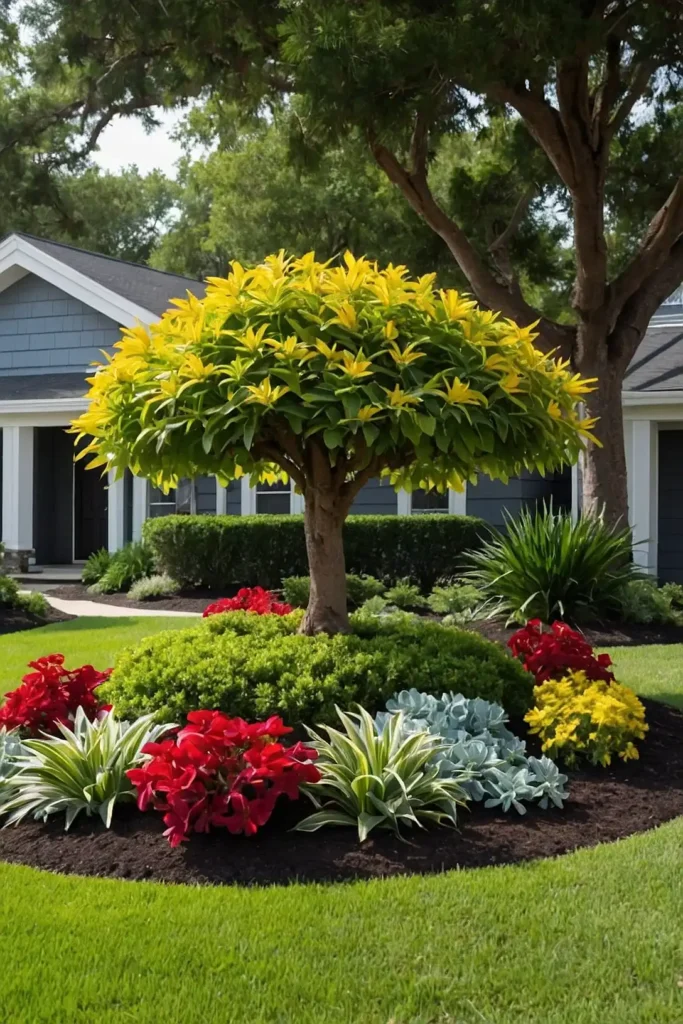
Create a focal point in your front yard with a specimen tree surrounded by concentric rings of complementary shrubs and flowers.
This landscape-design approach establishes a clear visual hierarchy while providing shade for understory plants that prefer indirect light.
Choose a flowering or architectural tree variety appropriate to your climate zone and available space for decades of growing beauty.
Conclusion
Your front flower beds offer endless creative possibilities to express your style while enhancing your home’s appearance.
Start with a single idea that resonates with you and watch your curb appeal transform dramatically.


